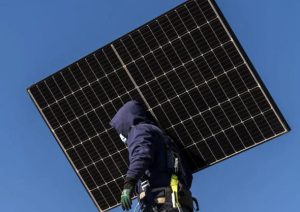Replacement Cycle: How Often for Solar Panels?
In the realm of renewable energy, solar panels stand out as a beacon of sustainability and efficiency. However, even these robust systems have a lifecycle, and understanding this cycle is pivotal for maintaining optimal performance. Let’s dive deep into the facts, leveraging American directness and precision, to shed light on the replacement cycle of solar panels.

Understanding the Lifespan
First things first: solar panels are built to last. Most manufacturers offer a standard performance warranty of 25 to 30 years. But what does this really mean? It means that after three decades, your panels should still produce about 70% to 80% of their original output. The annual efficiency decline rate is roughly 0.5% to 1%, a testament to the durability of these devices.
Physical Condition: A Critical Consideration
Solar panels can take a beating from Mother Nature. From the scorching sun to hailstorms, these units are designed to withstand extreme conditions. However, physical damage can occur, and its impact on performance is undeniable. If you spot cracked glass, warped back sheets, or loose connections, it's a clear signal that your system's efficiency might be compromised.
Technological Evolution: Staying Ahead
The solar industry is fast-paced, with advancements happening at breakneck speed. Panels that were installed 20 years ago are not nearly as efficient as the models available today. Upgrading to newer technology can significantly boost your system’s performance and, in many cases, offer better financial returns in the long run.
How often do you have to replace solar panels? This critical question hinges on several factors, including performance degradation, physical condition, and advancements in technology. While the standard warranty covers 25 to 30 years, the actual replacement cycle can vary based on these elements.
Proactive Maintenance: Extending Your System’s Life
Don’t just sit back and wait for problems to arise. Proactive maintenance is key to extending the lifespan of your solar panels:
- Regular Cleaning: Dirt, debris, and bird droppings can reduce efficiency. Keep your panels clean to ensure optimal performance.
- Inspections: Have a professional inspect your system annually to catch any potential issues early on.
- Monitor Performance: Keep an eye on your energy production. A significant drop could indicate it’s time for a closer look or even a replacement.
Making the Decision: When to Replace
So, when is the exact moment to replace your solar panels? If you’re noticing consistent underperformance, significant physical damage, or if your panels are nearing the end of their warranty period, it might be time to consider an upgrade. The decision should balance the cost of new panels against the potential energy savings and performance improvements of newer models.
In Conclusion
Solar panels offer a long-term commitment to clean, renewable energy. Understanding their replacement cycle is crucial for maintaining efficiency and maximizing your investment. By staying informed and proactive, you can ensure your solar energy system remains a powerful, sustainable source of electricity for years to come. Keep an eye on performance, maintain your system diligently, and be ready to embrace new technology to keep your energy production at its peak.
